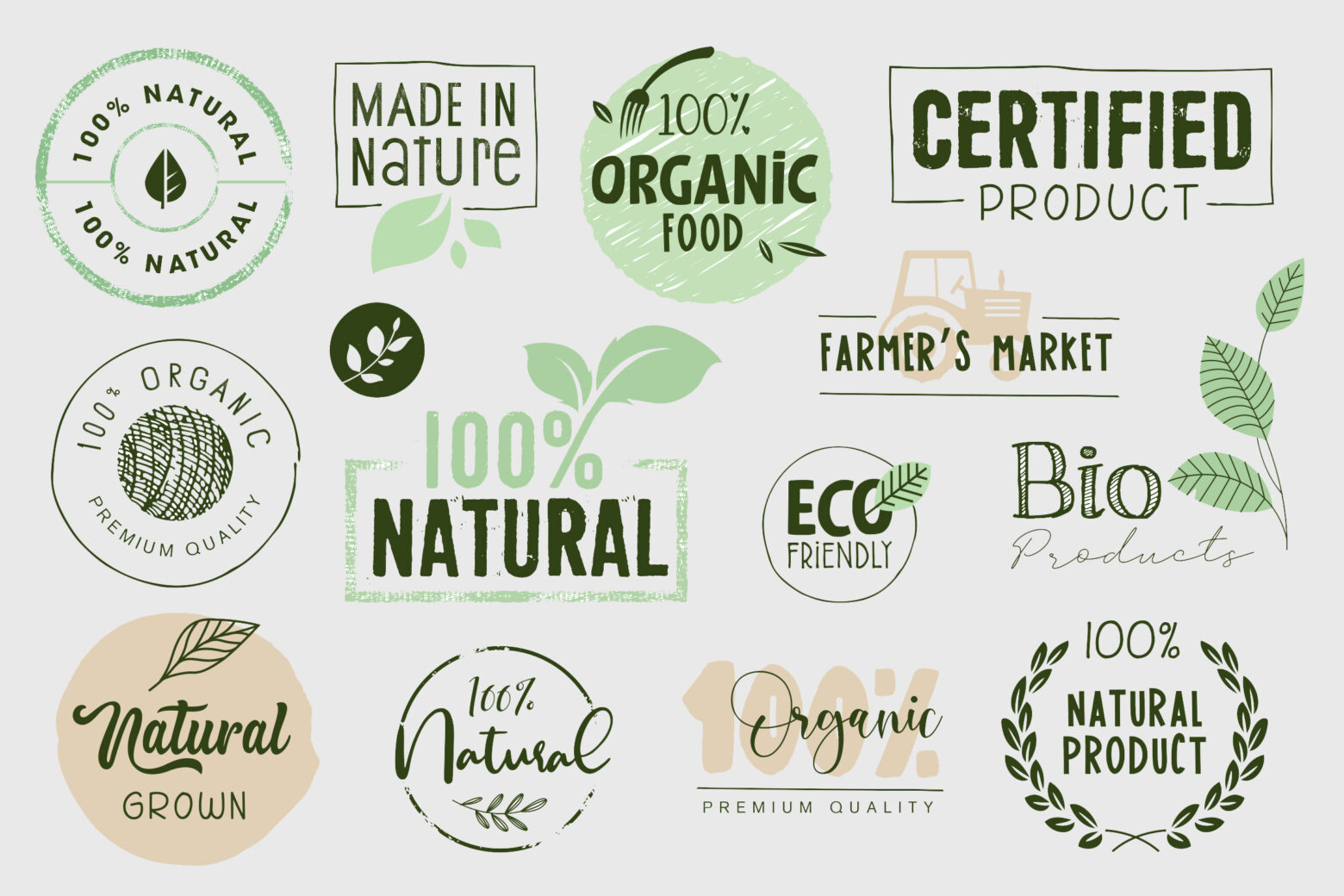Beyond the Buzz: Decoding Food Marketing for Meat, Poultry, and Eggs

Ever wonder what terms like natural, free-range, and organic on your groceries mean? Food labels can confuse flashy marketing terms with strict government-defined labels. As a food-labeling journalist and author of Eating Between the Lines, The Supermarket Guide to the Truth Behind Food Labels, I’ve seen how meat, poultry, eggs, and produce are sold with promises that sound meaningful but often aren’t backed by regulations. Let’s break down the differences between common food marketing buzzwords and U.S. government-approved labels —so you can shop smarter and see through the hype.
What Is “Natural” Meat and Poultry?
Natural is one of the most commonly used food marketing terms. It’s also confusing because shoppers assume natural guarantees a wholesome product, but that’s not necessarily true. The best example is the efforts of a Colorado ranching family, the Colemans. They pioneered the term “natural” in beef labeling by defining it based on how cattle were raised—specifically, without antibiotics or added growth hormones.
In the late 1970s, facing economic challenges, Mel Coleman Sr. recognized a demand for meat raised without these substances, the way he raised cattle for his family. He called his beef natural and sold it locally from coolers out of the back of his truck.
To support this claim, he developed detailed standards, including veterinary affidavits and traceability protocols, and worked with the USDA to gain approval. This initiative led to what could have become the first USDA-recognized definition of “natural” meat, focusing on the animal’s upbringing rather than just processing methods.
However, within a year of his petition to the USDA, the cattle industry challenged the term because it made Coleman beef seem superior to commonly used production methods that used growth hormones to increase their size quickly. The USDA buckled to the pressure and broadened the definition of “natural” to mean minimally processed with no spices, additives, or artificial ingredients without addressing animal-raising practices.1
RELATED: What Do “Natural Flavors” Really Mean?
Despite this change, the Coleman family continued to uphold their original standards, emphasizing the exclusion of antibiotics and growth hormones from their meat production. After many years, the USDA definition of natural still applies, meaning that virtually all fresh meat qualifies because there are no added ingredients after processing.
However, the USDA approved using the term “never-ever” to describe conditions where cattle and lamb do not receive hormones or antibiotics. A “No Hormones Administered” or “No Added Hormones” label on beef is significantbecause the USDA will approve those labels only if ranchers provide documentation.
Moving over to the pork, poultry, and eggs sections in the grocery store, the semantics get even more confusing. Since 1959, the USDA has banned the use of hormones in chicken, pork, and egg production. This doesn’t mean you won’t see “no hormones added” on those packages; it’s purely for marketing. Underneath “no hormones” is the fine print saying that hormones are not permitted. Remember that eggs, poultry, and pork are all hormone-free.1
Antibiotics are used in these three sectors to promote growth and prevent disease. You may see Raised Without Antibiotics or No Antibiotics Ever (NEA). These are USDA-regulated claims, meaning the animal was never given antibiotics from birth to harvest. If a package says No Antibiotics Ever, the producer must provide paperwork to the USDA’s Food Safety and Inspection Service (FSIS).
Grass-Fed and Organic Meat
“Grass fed” has become a popular claim on beef packages, often accompanied by images of cows on green pastures. Most U.S. beef in supermarkets comes from cattle that start on grass and are finished on grain (like corn) in feedlots. They aren’t labeled as such, but if a beef package doesn’t say grass fed, you can assume it had a grain-finished diet. Here’s what it means in practice.
Grass Fed
This label implies that cattle ate a diet of grass and forage rather than grain. The USDA used to have a specific grass-fed standard, requiring that 99% of the animal’s lifetime diet was grass or forage. That official standard was revoked in 2016, but the claim is still used and overseen case-by-case.
USDA Grass Fed
The USDA will approve “grass fed” on a beef label for small producers only if the producer documents that the animals were fed only grass or hay after weaning. In other words, no corn or grain finishing. So, when you see “100% Grass Fed,” it generally means the cow never ate grain. However, note that USDA grass fed does not guarantee anything about antibiotic or hormone use or that the cattle roamed on pasture versus being confined.
Third-Party Grass-Fed Certifications
- American Grassfed Association: Requires cattle to be 100% grass-fed and grass-finished, raised on pasture without confinement, and never administered antibiotics or hormones. Compliance inspections are every 15 months; certification applies to beef, bison, goat, lamb, and sheep. Animals must be born and raised on American family farms.
- Organic Plus Trust: Combines USDA Organic certification with additional grass-fed requirements, such as a minimum of 60% dry matter intake from pasture and a grain-free diet. Certification covers the entire supply chain, from production to handling, and works in conjunction with USDA-accredited certifiers.
- Pro-Cert Grass Fed Certification: Emphasizes a natural diet of grasses, legumes, and stored forages, promoting animal health and environmental benefits. Annual third-party inspections and evaluations. Applicable to cattle, sheep, and goats.
Certified Organic
Beef and lamb are, by definition, raised without hormones and verified by the USDA and other standards set by the National Organic Program (NOP). The standards include:
- 100% certified organic feed without animal byproducts,
- Year-round access to the outdoors, grazing on certified organic pasture for at least 120 days per year,
- A minimum of 30% of dry matter intake is obtained from pasture during the grazing season,
- The entire production process, including handling and processing facilities, must comply with organic regulations and is verified through annual inspections by USDA-accredited certifying agents.
Bison
Bison are unique in many ways when it comes to grazing, land use, and labeling. Their roaming behavior prevents overgrazing and promotes plant diversity. Unlike cattle, which are managed, bison are typically raised naturally on pasture, and producers strive to minimize handling and interventions. The U.S. government prohibits the use of growth hormones in bison. Antibiotics are also rarely used, only in cases of illness.
Free-Range vs. Cage-Free Eggs and Poultry
Free-range and cage-free mean different things—and are regulated to varying degrees.2
Cage Free
This term typically applies to egg-laying hens. Poultry raised for meat is all cage free, though this does not guarantee the birds have room to roam. Cage-free eggs come from hens not kept in battery cages, and the hens roam in an open barn or indoor enclosure. The USDA doesn’t have a strict legal definition for cage-free, but it does verify the claim for egg producers who request it. As of 2025, 10 states have mandated cage-free egg-laying hens.
Free Range
This term suggests hens or chickens have access to the outdoors. Free-range laying hens are cage-free with a door to the outside. USDA oversight (through its grading service) requires that free-range birds have continuous outdoor access during their laying or growing cycle. It might be a small pen or pasture—regulations don’t specify how big or for how long the hens must be outside; they have the option. The USDA FSIS will approve a “free-range” label for poultry meat if the producer shows birds had outdoor access for a significant portion of their lives.
Pasture Raised
This generally means animals spend time on pasture grazing and are certified by third-party certifications (like Certified Humane). If you see “pasture-raised” on eggs or chicken, it likely comes from a company following a voluntary standard. Always check for a certification logo in those cases.
Certified Organic
As of April 2025, the USDA NOP mandates that certified organic poultry, including egg-laying hens, have year-round access to the outdoors. However, the amount of space and type was poorly defined. As of January 2019, the Organic Livestock and Poultry Standards mandates that all certified organic poultry, including egg-laying hens, must have year-round access to outdoor areas at least 75% soil and include vegetation to the degree possible.
FTC Off-Label Food Marketing
The Federal Trade Commission (FTC) focuses on regulating truthfulness in food advertising and marketing claims under the Fair Packaging and Labeling Act. This is where food manufacturers are more likely to use creative language to gain consumer attention. How far they go is under the purview of the FTC. There are a few examples of areas of enforcement:
- Food origins, such as local, wild, or farmed seafood claims.3
- Weight-loss foods or dietary supplements are a particular category that the FTC pays close attention to, such as claims to “lose 50 pounds in less than a month.”4,5
- “Children’s brain health is enhanced by calcium-enriched bread.”6
Takeaways
As you can see, summing up the validity of claims for meat, poultry, and eggs is not simple. Remember the following:
- Natural is a marketing term.
- Never-Ever hormones and antibiotics for meat are meaningful.
- Hormone-free poultry, pork, and eggs means nothing.
- Never-Ever antibiotics for poultry, pork, and eggs are meaningful.
- Grass fed is primarily a third-party certification.
- Cage-free hens may still live in tightly confined quarters.
- Free range doesn’t guarantee how much space is allocated, only access.
- Pasture raised means more access, and the laws are improving.
As the food sector becomes increasingly competitive and expensive, food marketing claims will continue to be used to gain consumer attention. The best advice is to read food packaging with a hefty dose of common sense. Words do not make unhealthy foods healthy. By shopping the perimeter of the grocery store, with a few quick cuts over to frozen and/or canned fruits and vegetables, meats, poultry, and seafood, you’ll avoid most of the confusion surrounding the food marketing noise.
For further reading about food marketing, labels, and health claims, explore our Health Literacy landing page.
References
- USDA. (2012). Meat and Poultry Labeling Terms | Food Safety and Inspection Service. Usda.gov. https://www.fsis.usda.gov/food-safety/safe-food-handling-and-preparation/food-safety-basics/meat-and-poultry-labeling-terms
- Shell Egg Labeling guidelines for product bearing the USDA grademark. MANDATORY LABELING REQUIREMENTS PDP = Top View, only. PDP = Top View and Front Lip (Alternate Display Panels). (2018). https://www.ams.usda.gov/sites/default/files/media/ShellEggLabelingUSDAGrademarkedProduct.pdf
- Mind your net impression: when seafood is not wild, fresh-caught, or local. (2024, September 18). Federal Trade Commission. https://www.ftc.gov/business-guidance/blog/2024/09/mind-your-net-impression-when-seafood-not-wild-fresh-caught-or-local
- Federal Trade Commission. (2014, January 7). Sensa and Three Other Marketers of Fad Weight-Loss Products Settle FTC Charges in Crackdown on Deceptive Advertising. Federal Trade Commission. https://www.ftc.gov/news-events/news/press-releases/2014/01/sensa-three-other-marketers-fad-weight-loss-products-settle-ftc-charges-crackdown-deceptive
- Combating Deception in Dietary Supplement Advertising. (2013, July 18). Federal Trade Commission. https://www.ftc.gov/news-events/news/speeches/combating-deception-dietary-supplement-advertising#N_3_
- Wonder Bread Marketers Settle FTC Charges. (2002, March 6). Federal Trade Commission. https://www.ftc.gov/news-events/news/press-releases/2002/03/wonder-bread-marketers-settle-ftc-charges
Kimberly Lord Stewart
Kimberly Lord Stewart is an author, journalist, and culinary expert. Her work highlights the importance of incorporating whole foods into daily diets and emphasizes the connection between food and overall well-being.
More About The Author




